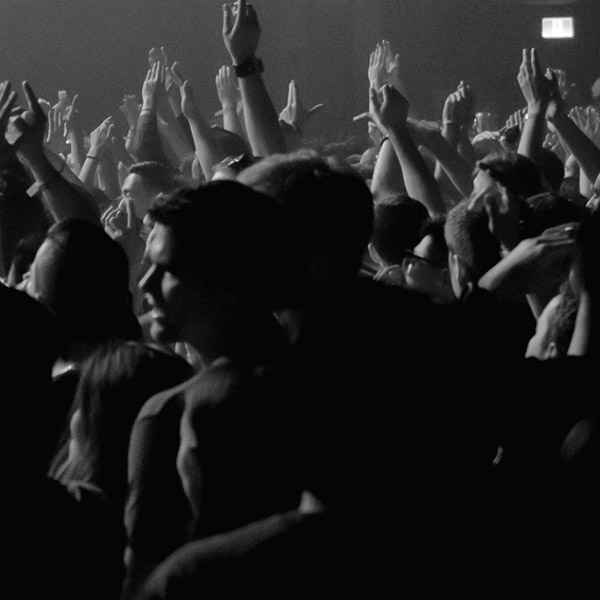How ‘Elio’ Composer Rob Simonsen Married Space Disco, Choir Dolls & Talking Heads to Bring Pixar’s Sci-Fi Adventure to Life
As a film and television composer who’s worked on Deadpool & Wolverine and Stranger Things, Rob Simonsen is no stranger to finding a way to weave pop music into his lush scores. But what he was a stranger to was composing for an animated film — until now.
The veteran composer — whose work also includes 2009’s 500 Days of Summer, 2018’s Love, Simon and 2024’s It Ends With Us — will make his animated debut this weekend with Pixar’s Elio, which hits theaters on Friday. In addition to Simonsen’s score, which hops from 11-year-old Elio’s begrudging home planet of Earth to the far reaches of outer space where he dreams to live forever, there are also two prominent music placements in the film: Talking Heads‘ existential 1981 single “Once in a Lifetime” and Vicente García‘s “Carmesí,” a top 20 hit on Billboard‘s Tropical Airplay chart in 2017.
In a conversation with Billboard, Simonsen tells us how both of those songs ended up in the movie, how he musically guides viewers between multiple planets in the sci-fi adventure, his 1973 Disney favorite that still resonates today, how he created his own “space disco” track for a memorable montage, and why he “felt at home” working in animated film.

I would love to start with when and how you got involved in this project. I’m not seeing any other animated work in your bio, and your only previous Disney project is Deadpool & Wolverine – so was that the connection?
They found me before Deadpool. Actually, I had done some scores that I think they found to use in their film, and they called me to meet with me and shared this really touching story [of Elio] with me. And I really loved what they were going for, and I felt like I understood it and was really excited. Of course Pixar [is] an incredible brain trust, an incredible group of people, and so there was a bit of a sympathetic resonance, I think. And, yeah, we got underway.
How long ago was that?
I think two and a half years ago, something around there. This one had a longer time frame than what I’m normally used to, working in live-action. I wrote a suite after seeing an initial cut and having a conversation with the director and really felt what they were going for. And I sat down and I wrote a suite and I sent it, and that ended up being “Elio’s Theme,” which is in the film — starts and ends the movie.
What was the biggest difference between scoring an animated film and the other movies you’ve previously worked on?
Oh, lots of stuff. You know, getting used to seeing hand sketches of really emotional scenes and filling in the blanks with your imagination, which actually is a process that I love. In a lot of ways, there’s not the limitations of exactly what frame something needs to hit. So you’re allowed to create music that has a little bit more inherent music logic to it. And in some cases, they’re able to get some of these things in kind of early and maybe have some musical moments even to hang the cut and the animation on.
Oh wow, that has to be very cool when that happens.
That happened pretty rarely, but when it does happen, it’s certainly nice.
This movie travels to so many different locations, so can you talk about creating music for each setting of this movie? So when Elio is on Earth, versus when he’s in the Communiverse, versus when he’s on Hylurg.
We were definitely trying to give each different location its own flavor. So for Hylurg, we focus on this low male choir and low brass. And for the Communiverse, we use these choir dolls, which are these small, handmade wooden robot dolls that are made by a Swedish company called Teenage Engineering. And we used them as kind of our vocal choir for the Communiverse, which they’re encoded with vowels and words and consonants, and it sounds like language, but it’s not English. It’s not really any specific language. So it has this kind of uncanny resemblance to human voices, but yet it sounds otherworldly, slightly technological. And then on Earth, it’s quite grounded, and there’s a lot of atmosphere, with simple piano melodies to kind of speak to Elio’s heart and his longing.
One of my favorite music moments is when Glordon and Elio are in the Communiverse and basically just treating it like one big amusement park, and there’s sort of a montage of all the fun they’re having. What were you going for with that music?
Kind of a pop track, a space disco cut. I love space disco. What an amazing little subgenre of the ’70s and ’80s. You know, Meco doing these kind of orchestrated but synthesized disco versions of all these sci-fi movies, theme songs and whatnot. And do a modern version of that, but also something that has this kind of nostalgic whimsy to it but with a solid beat that kind of makes you bop your head hopefully.
There are also two pop music parts of the movie – let’s start with the first one, Talking Heads’ “Once in a Lifetime.” Was that something you were involved in selecting, or was that the dream song that the filmmakers already wanted there?
Yeah, they picked that actually. By the time I saw the first cut, when I was brought on, it was in there. And I love that song, so I was happy to see it there.
I was racking my brain to think of another moment in a Disney/Pixar movie that features an existing song in its entirety like that and was having a hard time coming up with one. It’s jarring in a very cool way!
Yeah, it is a bit different for them. And off the top of my head, I’m not sure that I know of another one.
The other moment is a Vicente García song called “Carmesí,” which plays on Aunt Olga’s car radio in the movie. How was that song chosen?
I know they were chasing some options. And I think, actually, Zoe Saldaña [who voices Elio’s Aunt Olga] may have mentioned that song and put it forward as a song that she liked. So I think that there was a cool thread of involving her in that choice.
Between Stranger Things and Deadpool & Wolverine, you’re very familiar with how a song can get a big bump from being placed in a movie like this. Do you see a world where this young audience is going to discover Talking Heads and David Byrne or Vicente García through this film?
Sure, especially since there’s only those two song pieces. The Talking Heads, it’s interesting — it’s an older song now, but it still feels fresh sonically. And yeah, I hope that a young generation gets introduced to David Byrne.
Were you a Disney kid growing up or before working on this? What does working on a Disney project mean to you?
Disney has changed the world and has had so many influences and impacts on the world. And I really love that [Walt] Disney was a real visionary and someone who was trying to transport people to new places, but yet, in these new places, you hopefully find something inspiring about life and humanity and the experience of being human, and he was a really forward-thinking person. So, I mean, it’s undeniable the mark that Disney has left, and Pixar as well. Their track record is incredible, and they’ve had so many movies that have been so enjoyable to watch and have been so well-made and so smart, and I think they really cracked the code on making films that appeal to adults and kids. So it was a real dream to get a call from them and to work on this one.
Do you have a personal favorite Disney project from your past?
You know, I love [1973’s] Robin Hood. I loved it as a kid, and I recently rewatched it, and I was struck by how relevant it is to today’s times. So I recommend that movie as a rewatch to anyone now. It’s really, really resonant, and the music is incredible in that it’s very, very catchy melodies and a great score by George Bruns, who is an amazing Disney composer, and Roger Miller delivering these amazing songs. Some of those melodies are just constantly in my head. I find myself absentmindedly whistling the “Whistle Stop” song from Robin Hood when I’m walking down the street.
Do you hope to do more animated work after this?
Yeah, I would love to. I really enjoyed working with animators. They’re so sensitive. You know, their whole job is to capture the essence of a human emotion with drawings and representations of humans, and knowing exactly what kind of emotion to go for. And emotion is almost infinite in terms of the gradation of it and the spectrum of human emotions. And Pixar, they’re the best at doing these very specific facial expressions, and the performances that they infuse their characters with is really impressive. And I saw as these animations kind of improved over time and got more specific, a character would wince in a certain way or kind of make a face in a certain way. And I just appreciate how much study of humanity animators have to do, and that’s what we do as film composers, you know? You’re a study of human emotions. So I felt at home with these people. So I’d love to do it again.
What was it like seeing the movie in its entirety the first time?
I think when I saw the whole thing, I had some notes for myself. [Laughs] But, you know, we really worked hard and I think banged it into great shape, and I think the movie really sings. Sitting back and watching it with an audience for the first time at a premiere was great. There’s a lot of enthusiasm for the characters and a lot of laughs, and it’s very breezy and, I think, very poignant in moments. So to be able to feel that with a group of people, you know, that’s an irreplaceable experience.
Katie Atkinson
Billboard







